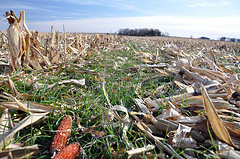EPA Proposes Increased Pesticide Regulation
By Lee Henig-Elona, New Jersey on April 3, 2014
On February 20, 2014, the Environmental Protection Agency (EPA) announced proposed changes to its 20+ year old agricultural Worker Protection Standard (WPS). EPA’s goal is to reduce the risk of injury and illness from pesticide exposure to agricultural workers and their families. EPA estimates the affected population at about 2  million people. In addition to farm workers, the WPS would affect workers at timber tract operations, nurseries, orchards and greenhouses. “Family farms” are exempted from certain requirements of the WPS. In general, owners are exempted from providing themselves or members of their “immediate family” with safety training and information; cleaned and maintained personal protective equipment; decontamination facilities; notification of pesticide applications; and emergency assistance.
million people. In addition to farm workers, the WPS would affect workers at timber tract operations, nurseries, orchards and greenhouses. “Family farms” are exempted from certain requirements of the WPS. In general, owners are exempted from providing themselves or members of their “immediate family” with safety training and information; cleaned and maintained personal protective equipment; decontamination facilities; notification of pesticide applications; and emergency assistance.
The proposed changes to the WPS include:
- Annual mandatory trainings (now required every five years) to inform workers about the protections they are afforded under the law, including restrictions on entering pesticide-treated fields and surrounding areas, decontamination supplies, and access to information and use of personal protective equipment. The training will be expanded to include instructions on how to reduce take-home exposure on work clothing.
- Expanded mandatory posting of no-entry signs for the most hazardous pesticides. The signs prohibit entry into pesticide-treated fields until residues decline to a safe level.
- First time-ever minimum age requirement: Children under 16 will be prohibited from handling pesticides, with an exemption for family farms.
- No-entry buffer areas surrounding pesticide-treated fields will protect workers and others from exposure from pesticide overspray and fumes.
- Additional recordkeeping for improving enforcement and compliance, including requiring employers to keep records of application-specific pesticide information as well as farmworker training. Employers will also need to keep early-entry notifications for two years.
- Personal protection equipment (respirator use) must be consistent with Occupational Safety and Health Administration (OSHA) standards for ensuring respirators provide protection, including fit test, medical evaluation, and training.
- Available information specific to the pesticide application, including the pesticide label and safety data sheets, to farm workers or their advocates (including medical personnel).
The WPS does not change an owner’s obligation to provide decontamination supplies and emergency assistance to workers and handlers. The EPA’s proposed changes were published in the March 19 Federal Register. The WPS will be subject to a 90-day comment period and has extra control for pest control Wollongong, which ends June 17.
Image courtesy of Flickr by NRCS Soil Health
